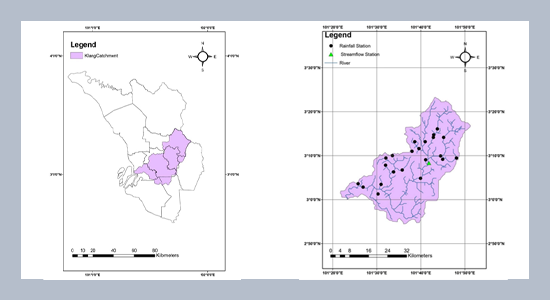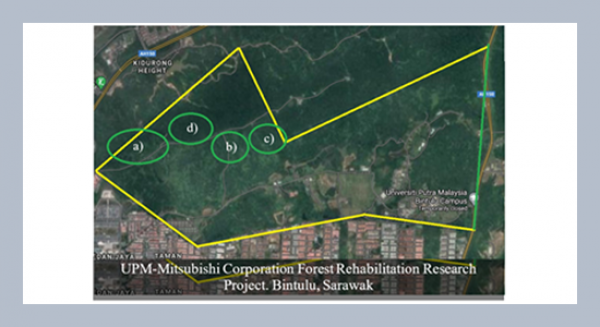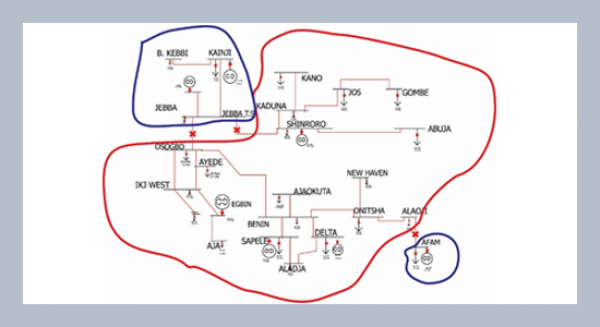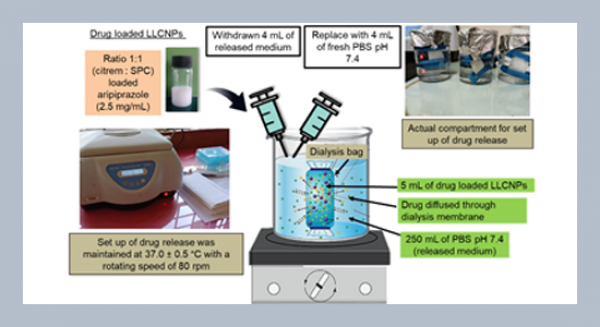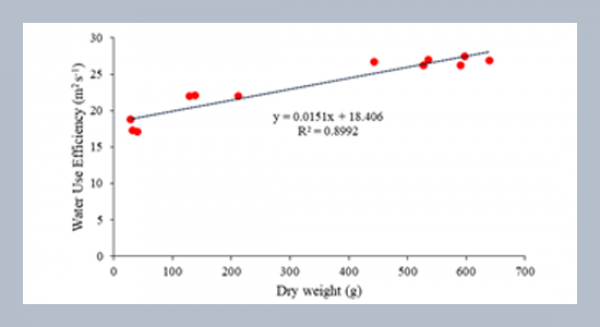REFERENCES
- Achite, M., Gul, E., Elshaboury, N., Jehanzaib, M., Mohammadi, B., Mehr, A.D. 2023. An improved adaptive neuro-fuzzy inference system for hydrological drought prediction in Algeria. Physics and Chemistry of the Earth, 131, 103451.
- Adnan, R.M., Yuan, X., Kisi, O., Yuan, Y. 2017. Streamflow forecasting using artificial neural network and support vector machine models. American Scientific Research Journal for Engineering, Technology, and Sciences, 29, 286–294.
- Ahmad, S., Kalra, A., Stephen, H. 2010. Estimating soil moisture using remote sensing data: A machine learning approach. Advances in Water Resources, 33, 69–80.
- Akbarian, M., Saghafian, B., Golian, S. 2023. Monthly streamflow forecasting by machine learning methods using dynamic weather prediction model outputs over Iran. Journal of Hydrology, 620, 129480.
- Arnell, N.W., Gosling, S.N. 2016. The impacts of climate change on river flood risk at the global scale. Climatic Change, 134, 387–401.
- Ayugi, B., Zhihong, J., Zhu, H., Ngoma, H., Babaousmail, H., Rizwan, K., Dike, V. 2021. Comparison of CMIP6 and CMIP5 models in simulating mean and extreme precipitation over East Africa. International Journal of Climatology, 41, 6474–6496.
- Chai, V.H., Chin, R.J., Ling, L., Huang, Y.F., Soo, E.Z.X. 2024. Regional and seasonal assessment of biases on high-resolution satellite precipitation estimations in peninsular Malaysia: 2011–2020. Journal of Hydroinformatics, 26, 1715–1734.
- Chai, V.H., Chin, R.J., Ling, L., Huang, Y.F., Soo, E.Z.X. 2025. Performance evaluation and error decomposition of CMORPH satellite precipitation estimation for Klang Valley, Malaysia. 5th International Symposium on Civil and Environmental Engineering, Langkawi, Malaysia, 012050.
- Chen, H., Sun, J., Lin, W., Xu, H. 2020. Comparison of CMIP6 and CMIP5 models in simulating climate extremes. Science Bulletin, 65, 1415–1418.
- Chin, R.J., Lai, S.H., Loh, W.S., Ling, L., Soo, E.Z.X., Huang, Y.F., Yeo, Y.Q. 2023. Soft computing method for settling velocity prediction of fine sediment in retention structure. Proceedings of the 3rd International Civil Engineering and Architecture Conference, Kyoto, Japan, 687–693.
- Chin, R.J., Lai, S.H., Ibrahim, S., Wan Jaafar, W.Z., Elshafie, A.H.K.A. 2019. New approach to mimic rheological actual shear rate under wall slips condition. Engineering with Computers, 35, 1409–1418.
- Dang, A.T.N., Kumar, L. 2017. Application of remote sensing and GIS-based hydrological modelling for flood risk analysis: A case study of District 8, Ho Chi Minh City, Vietnam. Geomatics, Natural Hazards and Risk, 8, 1792–1811.
- Danumah, J.H., Odai, S.N., Saley, B.M., Szarzynski, J., Thiel, M., Kwaku, A., Kouame, F.K., Akpa, L.Y. 2016. Flood risk assessment and mapping in Abidjan District using multi-criteria analysis (AHP) model and geoinformation techniques, (Cote D’ivoire). Geoenvironmental Disasters, 3, 10.
- Deng, B., Lai, S.H., Jiang, C., Kumar, P., El-Shafie, A., Chin, R.J. 2021. Advanced water level prediction for a large-scale, river-lake system using hybrid soft computing approach: a case study in Dongting Lake, China. Earth Science Informatics, 14, 1987–2001.
- Deng, B., Chin, R.J., Tang, Y., Jiang, C., Lai, S.H. 2019. New Approach to predict the motion characteristics of single bubbles in still water. Applied Sciences, 9, 3981.
- Flato, G.M. 2011. Earth system models: An overview. Wiley Interdisciplinary Reviews Climate Change, 2, 783–800.
- Generoso, R., Couharde, C., Damette, O., Mohaddes, K. 2020. The growth effects of El Niño and La Niña: Local weather conditions matter. Annals of Economics and Statistics, 140, 83–126.
- Ghose, D.K., Tanaya, K., Sahoo, A., Kumar, U. 2022. Performance evaluation of hybrid ANFIS model for flood prediction. 2022 8th International Conference on Advanced Computing and Communication Systems (ICACCS), 772–777.
- Hong, J.L., Hong, K. 2016. Flood forecasting for Klang river at Kuala Lumpur using artificial neural networks. International Journal of Hybrid Information Technology, 9, 39–60.
- IPCC, 2021. “Climate Change 2021-The Physical Science Basis”. Cambridge University Press. Cambridge, United Kingdom.
- Jha, M.K., Gassman, P.W. 2014. Changes in hydrology and streamflow as predicted by a modelling experiment forced with climate models. Hydrological Processes, 28, 2772–2781.
- Kandari, P.N.A., Saudi, A.S.M., Chyang, P.J., Kamarudin, M.K.A., Saad, M.H.M., Azid, A., Saudi, N.S.M., Mahmud, M. 2018. Flood risk pattern recognition analysis in Klang river Basin. International Journal of Engineering and Technology, 7, 86–90.
- Karim, S., Zhang, Y., Asif, M.R. 2017. Image processing based proposed drone for detecting and controlling street crimes. Proceeding of IEEE 17th International Conference on Communication Technology (ICCT), Chengdu, China, 1725–1730.
- Karim, S., Zhang, Y., Yin, S., Brohi, A.A. 2019. Impact of compressed and down-scaled training images on vehicle detection in remote sensing imagery. Multimedia Tools and Applications, 78, 32565–32583.
- Khadka, D., Babel, M.S., Kamalamma, A.G. 2023. Assessing the impact of climate and land-use changes on the hydrologic cycle using the SWAT Model in the Mun River Basin in Northeast Thailand. Water, 15, 3672.
- Li, F.F., Wang, Z.Y., Qiu, J. 2019. Long-term streamflow forecasting using artificial neural network based on preprocessing technique. Journal of Forecasting, 38, 192–206.
- Liu, Y., Wang, C., Jiang, C., Chin, R.J., Xiang, Z., Long, Y., Deng, B., Wu, Z. 2024. Water storage capacity estimation for a large complex lake system incorporating the water levels during flooding season. Journal of Hydrology: Regional Studies, 51, 101634.
- Liu, Y., Yang, Y., Chin, R.J., Wang, C., Wang, C. 2023. Long short-term memory (LSTM) based model for flood forecasting in Xiangjiang river. KSCE Journal of Engineering, 27, 5030–5040.
- Loh, W.S., Ling, L., Chin, R.J., Lai, S.H., Loo, K.K., Seah, C.S. 2024. A comparative analysis of missing data imputation techniques on sedimentation data. Ain Shams Engineering Journal, 15, 102717.
- Loh, W.S., Ling, L., Chin, R.J., Lai, S.H., Loo, K.K., Seah, C.S. 2024. A comparative analysis of missing data imputation techniques on sedimentation data. Ain Shams Engineering Journal, 15, 102717.
- Mesgari, E., Hosseini, S.A., Hemmesy, M.S., Houshyar, M., Partoo, L.G. 2022. Assessment of CMIP6 models’ performances and projection of precipitation based on SSP scenarios over the Menap region. Journal of Water and Climate Change, 13, 3607–3619.
- Nguyen, Q.H., Ly, H.B., Ho, L.S., Al-Ansari, N., Le, H.V., Tran, V.Q., Prakash, I., Pham, B.T. 2021. Influence of data splitting on performance of machine learning models in prediction of shear strength of soil. Mathematical Problems in Engineering, 2021, 1–15.
- Otchere, D.A., Ganat, T.O.A., Gholami, R., Ridha, S. 2021. Application of supervised machine learning paradigms in the prediction of petroleum reservoir properties: Comparative analysis of ANN and SVM models. Journal of Petroleum Science and Engineering, 200, 108182.
- Saha, A.K., Agrawal, S. 2020. Mapping and assessment of flood risk in Prayagraj District, India: A GIS and remote sensing study. Nanotechnology for Environmental Engineering, 5, 11.
- Saraiva, S.V., Carvalho, F.D.O., Santos, C.A.G., Barreto, L.C., Freire, P.K.D.M.M. 2021. Daily streamflow forecasting in Sobradinho reservoir using machine learning models coupled with wavelet transform and bootstrapping. Applied Soft Computing, 102, 107081
- Schoeman, D.S., Gupta, A.S., Harrison, C.S., Everett, J.D., Brito-Morales, I., Hannah, L., Bopp, L., Roehrdanz, P.R., Richardson, A.J. 2023. Demystifying global climate models for use in the life sciences. Trends in Ecology and Evolution, 38, 843–858.
- Soo, E.Z.X., Chin, R.J., Ling, L., Huang, Y.F., Lee, J.L., Lee, F.W. 2024. Streamflow simulation and forecasting using remote sensing and machine learning techniques. Ain Shams Engineering Journal, 15, 103099.
- Soo, E.Z.X., Wan Jaafar, W.Z., Chin, R.J., Ling, L., Ng, C.Y., Prashant, S. 2022. Streamflow evaluation using IHACRES model in Kelantan river basin, Malaysia. 2nd International Conference on Civil and Environmental Engineering (ICCEE 2022), Kajang, Malaysia, 04008.
- Tan, M.L., Liang, J., Samat, N., Chan, N.W., Haywood, J.M., Hodges, K. 2021. Hydrological extremes and responses to climate change in the Kelantan River Basin, Malaysia, based on the CMIP6 HighResMIP experiments. Water, 13, 1472.
- Teutschbein, C., Seibert, J. 2012. Bias correction of regional climate model simulations for hydrological climate-change impact studies: Review and evaluation of different methods. Journal of Hydrology, 456, 12–29.
- Tiwari, M.K., Adamowski, J. 2013. Urban water demand forecasting and uncertainty assessment using ensemble wavelet-bootstrap-neural network models. Water Resources Research, 49, 6486–6507.
- Tootoonchi, F., Todorović, A., Grabs, T., Teutschbein, C. 2023. Uni- and multivariate bias adjustment of climate model simulations in Nordic catchments: Effects on hydrological signatures relevant for water resources management in a changing climate. Journal of Hydrology, 623, 129807.
- Wang, L., Yin, S., Alyami, H., Rashid, M., Almotiri, J., Alyamani, H.J., Alturise, F. 2022. A novel deep learning-based single shot multibox detector model for object detection in optical remote sensing images. Geoscience Data Journal, 11, 237–251.
- Xin, X., Wu, T., Zhang, J., Yao, J., Fang, Y. 2020. Comparison of CMIP6 and CMIP5 simulations of precipitation in China and the East Asian summer monsoon. International Journal of Climatology, 40, 6423–6440.
- Yao, Y., Yang, X., Lai, S.H., Chin, R.J. 2021. Predicting tsunami-like solitary wave run-up over fringing reefs using the multi-layer perceptron neural network. Natural Hazards, 107, 601–616.
